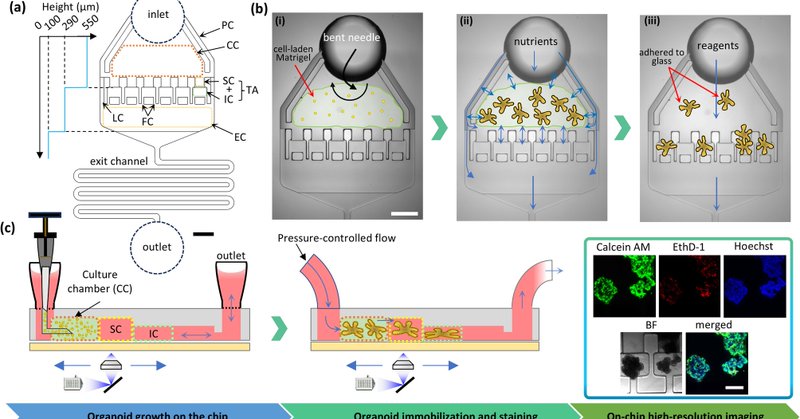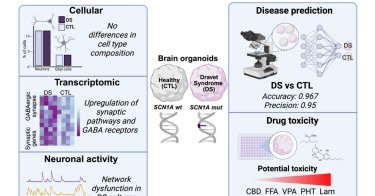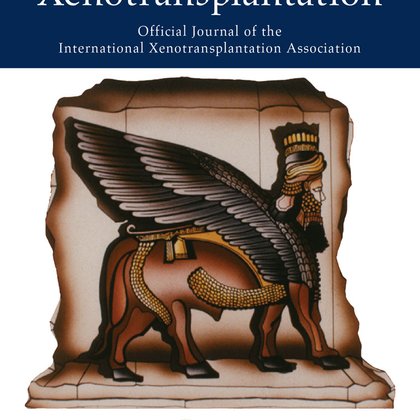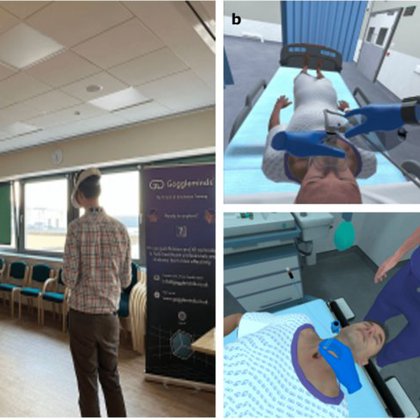
Science Advancement and Outreach
@SAOscience
Followers
1K
Following
5K
Media
1K
Statuses
5K
Promoting human-relevant research, policies, and funding opportunities. Better for patients, better for animals.
Washington DC
Joined September 2022
It was great to see @NIH take a real step toward non-animal methods this week — but it’s just the beginning. Its announcement only covers part of our Research Modernization NOW plan. There’s still much more to do to shift the paradigm. Let's take a look at where we stand. 🧵
1
5
16
Another groundbreaking discovery brought to you by organoids ✨🧫✨ @StanfordMed scientists created ulcerative colitis colon organoids (colonoids) using biopsies from pediatric patients with the condition. @DrJideOjo and colleagues discovered that problems with lipid metabolism
0
0
2
This paper is now published in @SciReports! Congratulations @benyakar, and @utmechengr and @ugavetmed colleagues! https://t.co/WavAFKdEZX
nature.com
Scientific Reports - A microfluidic platform for culturing and high-content imaging of adult stem cell-derived organoids
You've heard of organoids and organ-chips—but what about an OrganoidChip+? Scientists at @utmechengr & @ugavetmed developed this new imaging-ready microfluidic platform for research, drug screening, & disease modeling. Preprint by @benyakar & colleagues: https://t.co/1zBlLW0EuL
0
1
5
In this brief communication, scientists at @NIAIDNews and @UniVerona report that prions from neurodegenerative disorders—specifically Creutzfeldt–Jakob disease and Fatal Familial Insomnia—can infect human cerebral organoids regardless of whether the organoids carry the
nature.com
npj Dementia - Infecting human brain organoids with FFI or sCJD preserves prion traits regardless of host genotype
0
0
4
Researchers have uncovered new molecular pathophysiology features underlying Dravet syndrome, identifying impaired network connectivity and an early excitatory–inhibitory imbalance in human brain organoids. Read in @iScience_CP: https://t.co/MHTmCfmmFa Turnpin et al. also
cell.com
Artificial intelligence; biological sciences; neuroscience; optical imaging; techniques in neuroscience
0
0
6
DC/MD/VA friends! @MelanieDGKaplan is hitting the road with LAB DOG 🐾—starting tonight at Northeast Neighborhood Library (@dcpl) at 6:30 pm with Mary Hollingsworth. More stops ahead: Fairfax Station (Dec 17), Woodbridge (Jan 3), Annapolis (Jan 4), Frederick (Jan 22), Takoma
0
2
5
The human brain doesn’t just recognize human voices—it also recognizes those of chimpanzees. A new preprint by @LeonardoCeravo2, Coralie Debracque, @bonobo_style, & Didier Grandjean at @CISA_UNIGE & @UNIGEnews in @eLife shows that "regions of the human auditory cortex that
0
3
6
A systematic review examines 17 studies assessing the usefulness of 3D-printed, VR, and AR surgical simulators for teaching urology trainees to perform renal cancer surgeries, with many focusing on laparoscopic and robot-assisted partial nephrectomies. The authors advise that
0
0
1
New study published in @WileyGlobal’s journal, Xenotransplantation explores the views of 2689 healthcare workers in Saudi Arabia towards xenotransplantation, and found: 🗨️ Acceptance of xenotransplantation was low to moderate (mean = 2.1/5) ️📋 Fewer than half (45.4%) expected
onlinelibrary.wiley.com
Background The shortage of human organs for transplantation is a pressing global issue, propelling interest in xenotransplantation as a viable alternative. This study aims to assess the knowledge,...
0
0
3
New research from @MDAndersonNews brings human-relevant insights to breast cancer using multi-omics. @nicholas_navin's lab developed wellDR-seq, a high-throughput method that profiles the genome and transcriptome of thousands of single cells simultaneously. @KaileWang,
0
1
7
Congrats to @RevaliaBio on its $26.7 million @ARPA_H grant! "Revalia will lead the effort to build advanced AI-driven models trained on Human Data Trials, living systems derived from donated human organs, organ-on-chip platforms, and multimodal datasets." Read more:
0
2
5
Join the Q&A webinar for the NAMs Reduction to Practice Challenge this Wednesday, December 10th at 3:00pm ET! Hosted by @NIH and @Iamherox. Link to register:
herox.zoom.us
What is the Complement-ARIE NAMs Reduction to Practice Challenge and how can you participate? Join the National Institutes of Health (NIH) team for a live Q & A webinar. Build the future of human-b...
🚨 Last week, the NAMs Reduction to Practice Challenge launched! @NIH will award $7M over 3 phases to multidisciplinary teams that can successfully use combinatorial non-animal methods to deliver usable, human-relevant solutions within just 3 years. https://t.co/sHkrFaCFO2
0
1
5
The Fall 2025 edition of SAO Quarterly is landing in inboxes this week! Want insider updates on our work, upcoming events, funding opportunities, and must-read articles—all in one place? 🙅 No spam. ✅ Just 4 content-packed emails per year. "This is an amazing newsletter!!!" –
0
3
5
In this review, Niraj Chaudhary & @LuisVillaDiaz2 of @OUBioSci provide a comprehensive analysis of current animal-free human pluripotent stem cell (hPSC) culture platforms and their role in drug discovery, regenerative medicine, and more. "Ultimately, the integration of hiPSC
0
0
5
New website to bookmark! 🔖 The Biomedical models Hub (BimmoH) is the largest public database of biomedical research papers using human biology-based models to date. You can search by model, clinical condition, disease, pathophysiology, anatomy, histology, cell types, and more.
0
2
5
In November, @SAOscience submitted comments on @NIH’s Draft Priorities for the Muscular Dystrophy Coordinating Committee (MDCC) Action Plan. In our statement, we urged the committee to fully embrace human-based research and align with NIH initiatives expanding funding, training,
0
1
4
Using human induced pluripotent stem cell-derived neuronal models, including cortical organoids, Lee et al. discovered that the chromosomal deletion that causes Smith-Magenis syndrome disrupts multiple steps of cortical development, including chromatin wiring, transcriptional
0
1
7
A recently published paper in @ScienceMagazine by Vani G. Rajendran et al. claims macaques can “tap to the beat” of “Everybody” by Backstreet Boys. The authors attempt to extrapolate this finding to the evolutionary origins of human musicality and beat perception, but science and
1
2
4
A UK study by researchers at @OUHospitals explores the use of virtual reality provided by @goggleminds to teach tracheostomy skills to medical trainees. Tracheostomies are rarely performed procedures, and because trainees often have limited clinical exposure, some programs have
cureus.com
Objective: The objective of this study is to evaluate the effectiveness of virtual reality (VR) simulation in tracheostomy teaching for healthcare professionals and its impact on short- and medi...
0
0
3
📢 Call for Abstracts! The 4th Helsinki Animal Law Conference will be held June 9–10, 2026, at @helsinkiuni, with a PhD workshop on June 8th. Researchers at all career stages are invited to submit 300–500-word abstracts by January 31st for either the conference or the PhD
0
4
5






